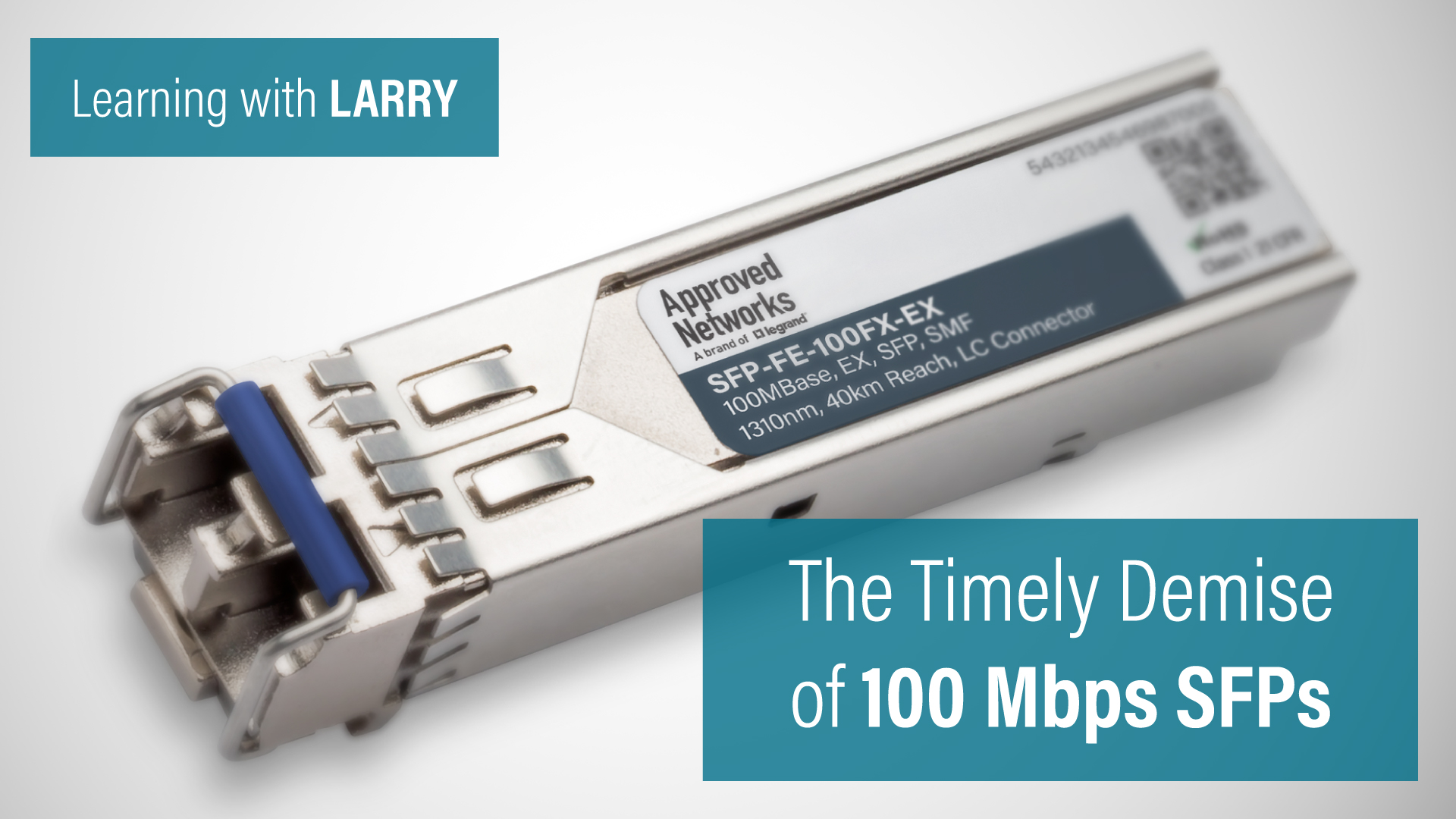The Demise of 100 Mbps SFPs, and a Simple Solution
Posted by Larry Legg on Sep 10, 2025

Yes, the time has come. Much like GBICs, 10 gigabit XFPs, SONET gear, and woolly mammoths, support for and availability of the 100 Mbps fiber transceiver is coming to an end.
Remember when 100 Mbps felt fast? When engineers said, “We’ll never use the entire DS3(45Mbs)”? Or even the sound of a dial-up modem? Those days are long gone. And maybe you don’t remember them at all, because today, we’re talking about interfaces running at 1.6 Tbps!
As an engineer, you’re constantly weighing bandwidth needs against budget. But you also have to consider the devices in your network that aren’t going anywhere, some of which still rely on 100 Mbps small form-factor pluggable (SFP) interfaces. The challenge comes when you upgrade your switches to modern platforms loaded with high-speed ports, only to discover they no longer communicate with that trusty old device in the corner running a 100 Mbps interface. That’s when it hits: 100 Mbps fiber pluggable transceivers are officially at end-of-life (EOL).
So, what can you do?
Many devices with 100 Mbps fiber interfaces also feature 10/100/1000 copper ports. That’s where a media converter comes in. Yes, that small, affordable black box that takes a 1G SFP of your choice and converts it to a copper 10/100/1000 port. Think of it as your network’s bridge between the past and the future.
How does it work?
In simple terms, you’re converting the 100 Mbps interface to 1G, and then using 1G to cover the distance required. This restores the connectivity and reach you once had with a 100 Mbps fiber connection, without leaving that legacy device stranded.
How should you design the network?
Here are a few key steps:
- Assess your legacy device’s ports:
- Do I have a 10/100/1000 copper port on the end device?
- If not, can I use a copper SFP?
- Check the distance to your new network device:
- Use multimode fiber SFPs for short distances under 550m.
- Use single-mode options for distances from 550m up to 120km.
- Evaluate available power:
- AC? 48V DC?
- Consider the environment:
- Industrial setting? Temperature-controlled room?
- Plan the mounting:
- Shelf placement
- DIN rail mount on the wall
- Rack-mounted DIN
Old vs New Network
The diagram below shows how a media converter enables you to keep legacy devices connected while upgrading your network.

When it comes to keeping legacy devices connected to your modern network, media converters are a simple and reliable answer. They’re available in both AC and DC models, as well as industrial options.
Media converters give you the flexibility to connect legacy equipment with today’s high-speed networks. Approved Networks’ knowledgeable experts can help you design a solution that fits your needs. Contact us to learn more.
